

Parametric Equations
by
Hieu Huy Nguyen
We want to explore the behavior of paramtric curves of the given parametric equations, where a and b are variables which affect the graph:

![]()
We start by setting a = 1 and b = 1 to try to understand what kind of graph is produced when the variables are 1. The equation is as follows below:

![]()
The graph produced from this equation displayed below:
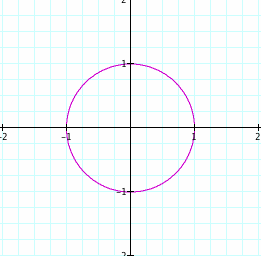
We can conclude that the paramtric equations for x = cos(t) and y = sin(t) create a circle with unit radii of 1 from the origin. Now, we want to vary the values of a and b to observe the behavior of the graph.
For a = 1, b = 2, the equation and graph generated is displayed as follows:
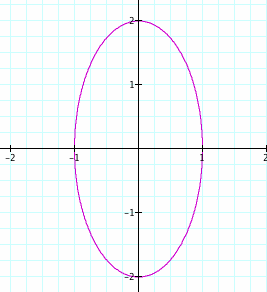
Notice that there is change. The curve shown is no longer a unit circle, but it has become an ellipse where the y - axis distance from the origin is the same as the value of b.
We can investigate further to see if this property holds with other variables for b as a = 1.
For a = 1, b = 4, the equation and graph generated is displayed as follows:
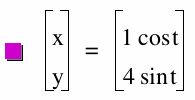
![]()
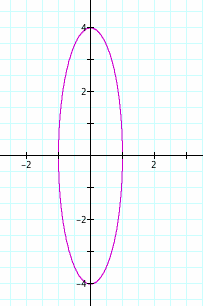
notice that the change is similar to before. The result is still an ellipse with the x-axis distance remaining constant from the origin while the y-axis distance changes. The animation shown below illustrates the changes in the graph as we keep a = 1 and vary the values for b from 1 to 4.
We can now conclud the for the parametric equations, the variable b affects the graph by changing the vertical (y-axis) of the ellipse to a distance of b units from the origin (which is also considered the center of the ellipse).
Based on this investigation, we can assume that the variable a would have the same affect to the ellipse; except it would affect the distance of the x-axis.
For a = 2, b =1 , the equation and graph generated is displayed as follows:
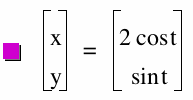
![]()
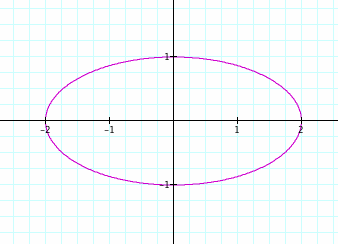
Notice that there is change. The curve shown is no longer a unit circle, but it has become an ellipse where the y - axis distance from the origin is the same as the value of a.
We can investigate further to see if this property holds with other variables for a as b = 1.
For a = 4, b = 1, the equation and graph generated is displayed as follows:
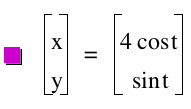
![]()
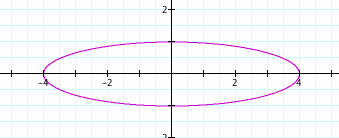
notice that the change is similar to before. The result is still an ellipse with the x-axis distance remaining constant from the origin while the x-axis distance changes. The animation shown below illustrates the changes in the graph as we keep b = 1 and vary the values for a from 1 to 4.
Our assumption is true, and we can now conclude that variable b affects the graph by changing the horizontal (x-axis) of the ellipse to a distance of a units from the origin (which is also considered the center of the ellipse).
Geomtrically, we observe the changes of the parametric equations to be similar to the changes of the graph generated from the equation of an ecclipse shown below:

For the equation of an ellipse, the variables a and b determine the radial distance of the axis as well. The large distance from the origin is called the major axis and the smaller distance from the orgin is the minor axis. This investigation demonstrates the relationship of parametric equations x = cos(t) and y = sin(t) create the same behavior as the equation of an ellipse on a Cartesian plane.
Go back to Hieu's HOME PAGE
Go back to EMAT 6680 HOME PAGE